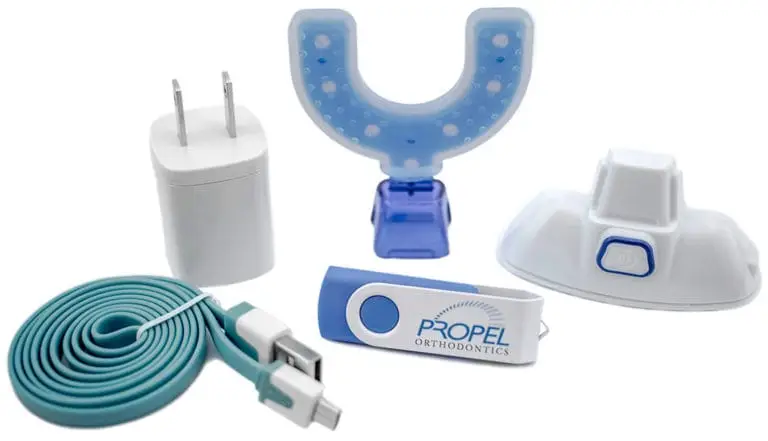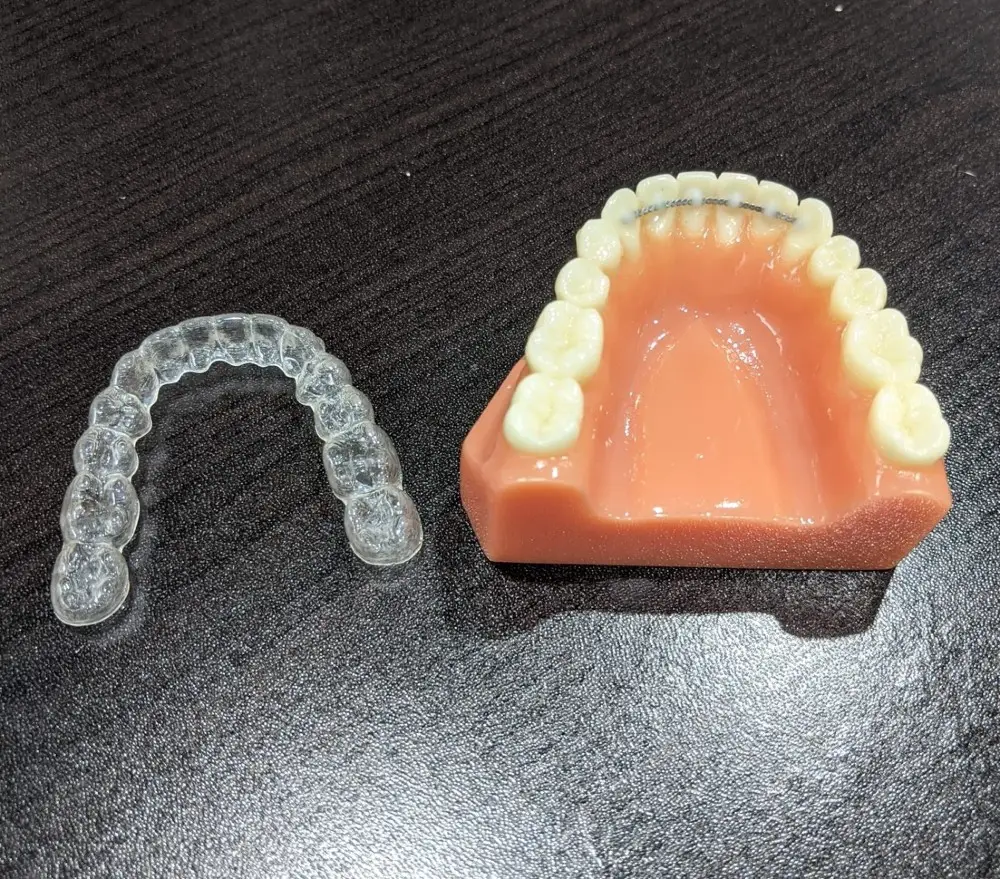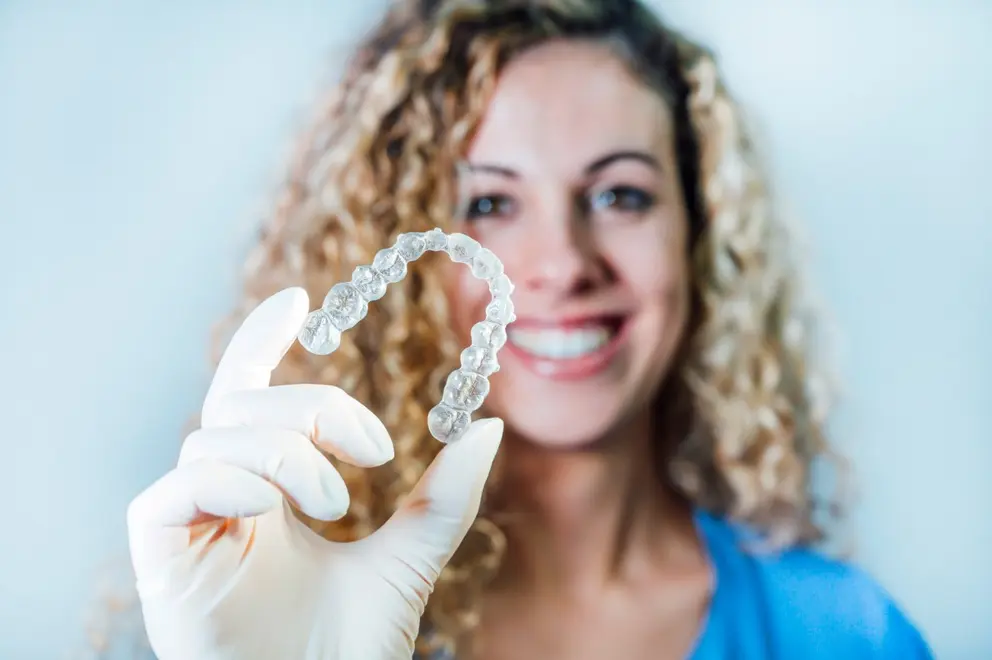
Accelerated Invisalign – Propel’s VPro5
Diamond Braces is happy to offer its patients VPro5 by Propel Invisalign, the latest tool that helps to straighten your teeth quicker.

Since clear aligners are removable, you may assume that removability means less maintenance than fixed appliances. After all, you aren’t constantly picking out food debris from any wires or brackets , so that means easier, more effortless care, right?
Caring for your Invisalign aligners is essential. You need to be careful both when they are in your mouth and when they're not. Proper care is key to avoiding damage or loss. By following a few simple storage tips, you can reduce these risks.
It's important to remember that even small mistakes can delay your treatment. A wrong step for just two hours might mean extra hours of treatment. To help you, here are some tips on how to store your aligners correctly.
First, let's talk about how to store Invisalign aligners properly. Always keep them in a safe place. This reduces the chance of losing them or causing any damage. Remember, a lost or damaged aligner can slow down your treatment progress.
Now, let's discuss invisalign aligner storage dos and don'ts. Do keep your aligners in their case when you're not wearing them. Don't leave them out in the open where they can get dirty or lost. Also, avoid exposing them to extreme temperatures.
These simple steps will help you take good care of your aligners. By following them, you can keep your treatment on track. Remember, taking care of your aligners is as important as the treatment itself.

If you live with any furry friends at home, then you’re probably familiar with their desire to chew everything in front of them. Puppies, in particular, engage in intense teething, and they engage in this habit:
When taking care of clear aligners, it's important to keep them safe from pets. Just like teething babies, pets might chew on things they can reach. However, unlike babies, pets can climb and reach higher places.
So, always keep your aligners out of their reach. Place them in a high spot where pets cannot get to them. This is one of the best practices for clear aligner storage.
It's also key to answer some common questions about storing clear aligners. Remember, aligners are not chew toys for pets.
For good oral health and to keep your braces or aligners in top condition, it's important to store them correctly. Place them somewhere safe and high up, away from pets. This helps your aligners last longer and work better.
Brush and floss your teeth regularly to support this care. Whether you have brackets and wires or other types of braces, taking these steps ensures their effectiveness.
If your aligner tray drops on the floor, don’t take any chances, and don’t hesitate to clean it ASAP .

Researchers have identified over 700 different species of bacteria that live inside the human mouth. Most of these species are harmless, but saliva can sometimes transmit numerous infectious diseases, including:
You don’t want your aligner appliances to become a Petri-dish for these germs, nor for plaque. That’s why it’s so crucial to follow a three-step process every time you remove your clear aligners:
To maintain your aligners properly, it's essential to keep them clean. Moist environments can promote bacterial growth. Therefore, after cleaning your aligners, allow them to air-dry. This helps in keeping them hygienic
For effective drying, use aligner containers that have small vent holes. These containers are designed to aid in the drying process, ensuring your aligners stay clean and safe for use.
Aligner treatment is an important part of your journey to straighten your teeth. Following your treatment plan is key to success.
Remember to gently clean your aligners with a soft-bristled toothbrush. This will help in maintaining the aligners without damaging them. Regular and careful cleaning is crucial for the health of your teeth and the effectiveness of your aligner treatment.

If you don’t have a case on hand to remove your aligners, that’s obviously a problem. For the best results when out and about, it’s always good to keep your aligners stored in a pouch or go-bag with:
Aligner tools help with removing your aligners, which can be tight and challenging, especially during the first few days of a new tray. These tools use a small hook or lever to gently loosen the aligner. This makes it easier to take them out for storage.
To keep track of your aligners, use color-coded container cases. Different colors help you distinguish between home and travel containers.
Always store your travel case in your school, work, or travel bag. This ensures you don't forget it. Remember to return it to the bag after use at home.
Wear your aligners for 22 hours a day for the best results. Unlike traditional metal braces, you can remove them when eating or drinking. Clean them in lukewarm water to maintain hygiene. Following these steps aids the treatment process.
Consider other options like lingual braces or tooth-colored braces if you're looking for alternatives. However, aligners offer a convenient and less visible solution for teeth alignment.